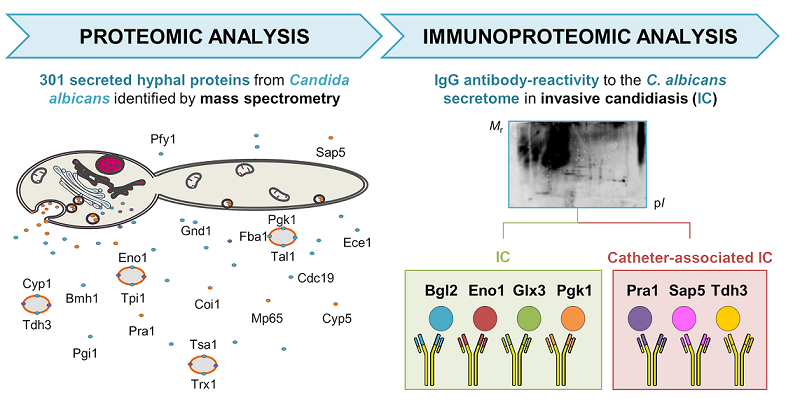Invasive candidiasis (IC) is associated with high morbidity and mortality in hospitalized patients if not diagnosed early. Long-term use of central venous catheters is a predisposing factor for IC. Hyphal forms of Candida albicans (the major etiological agent of IC) are related to invasion of host tissues. The secreted proteins of hyphae are involved in virulence, host interaction, immune response, and immune evasion. To identify IC diagnostic biomarker candidates, we characterized the C. albicans hyphal secretome by gel-free proteomic analysis, and further assessed the antibody-reactivity patterns to this subproteome in serum pools from 12 patients with non-catheter-associated IC (ncIC), 11 patients with catheter-associated IC (cIC), and 11 non-IC patients. We identified 301 secreted hyphal proteins stratified to stem from the extracellular region, cell wall, cell surface, or intracellular compartments. ncIC and cIC patients had higher antibody levels to the hyphal secretome than non-IC patients. Seven secreted hyphal proteins were identified to be immunogenic (Bgl2, Eno1, Pgk1, Glx3, Sap5, Pra1 and Tdh3). Antibody-reactivity patterns to Bgl2, Eno1, Pgk1 and Glx3 discriminated IC patients from non-IC patients, while those to Sap5, Pra1 and Tdh3 differentiated between cIC and non-IC patients. These proteins may be useful for development of future IC diagnostic tests.

